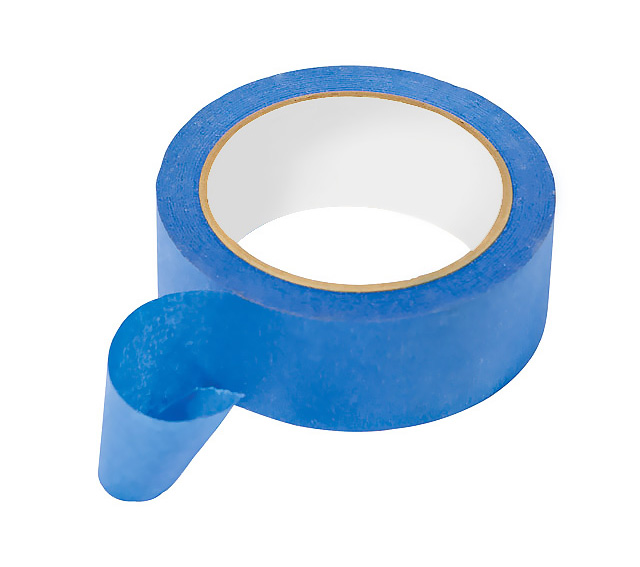Creating Crisp Paint Lines
Yichang Adhesive New Material Co.,Ltd. 2023-11-110 views
Understanding the Importance of Clean Lines in Painting
Clean lines are an essential aspect of any successful painting project. They contribute to the overall professional and polished look of the finished product. Whether you are painting a room, a piece of furniture, or a work of art, achieving crisp lines can make a significant difference in the overall aesthetics. Clean lines provide a sense of precision and attention to detail, elevating the overall quality of the project.
One of the key tools that can help in creating crisp paint lines is painter's tape. This versatile adhesive tape is specifically designed to be used during painting to achieve clean edges and sharp lines. It acts as a barrier, preventing paint from bleeding or smudging outside the desired area. Painter's tape not only helps to create straight lines along edges or trim but also assists in creating intricate designs and patterns. Providing a clean surface for your paint application, painter's tape allows you to work with confidence, ensuring that your lines appear sharp and well-defined.
Selecting the Right Paint and Tools for Achieving Crisp Lines
When it comes to achieving crisp lines in painting, selecting the right paint and tools is crucial. The type of paint you choose can greatly affect the final result. For clean and sharp lines, it is recommended to use high-quality acrylic or latex paints, as they have better adhesion and are less likely to bleed. These types of paints also dry quickly, allowing you to apply multiple coats without worrying about smudging or smearing.
In addition to the paint, having the right tools is equally important. A high-quality brush or roller can make a significant difference in achieving clean lines. When it comes to brushes, look for ones with fine bristles that can deliver precise strokes. For rollers, opt for ones with a smooth surface to ensure an even application. Additionally, investing in good quality painter's tape is essential. YITAP Painter tape, for example, is known for its strong adhesion and is designed to create sharp lines without damaging the surface underneath. So, when selecting your paint and tools, make sure to choose ones that are specifically designed to help you achieve crisp and clean lines.
Preparing the Surface for Painting to Ensure Sharp Lines
Preparing the surface before painting is an essential step to ensure clean and sharp lines. Before picking up that paintbrush, it's important to give the surface a thorough cleaning. Remove any dirt, dust, or grease using a mild detergent or a suitable cleaning solution. This will ensure that the paint adheres properly and prevents any imperfections from showing through.
Once the surface is clean, make any necessary repairs. Fill in any cracks or holes with a suitable filler and sand down any rough patches. A smooth surface will provide a better canvas for achieving crisp lines. Additionally, consider using a primer before applying paint. Not only does primer help the paint adhere better, but it also helps to create an even surface, reducing the chances of bleeding or feathering along the edges.
In conjunction with preparing the surface, choosing the right painter's tape is crucial for achieving those clean paint lines. Painter's tape acts as a barrier, preventing paint from bleeding onto areas where it shouldn't. Look for high-quality tape, such as the YITAP Painter tape, which offers excellent adhesion and clean removal without damaging the surface. Apply the tape firmly along the edges or areas where you want to create a crisp line. Ensure that the tape is straight and securely adhered to the surface, eliminating any gaps where paint could leak through.
Applying Painter's Tape Effectively for Clean Edges
When it comes to achieving clean edges in your painting projects, applying painter's tape effectively is crucial. Painter's tape is a valuable tool for creating crisp lines and preventing paint bleed. To ensure the best results, it's important to follow a few key steps.
First, make sure the surface you are applying the tape to is clean and dry. Any dirt, dust, or moisture can compromise the tape's adhesion, leading to less precise lines. Once the surface is prepared, carefully place the tape along the edges where you want to create a clean line. Press down firmly on the tape to ensure it adheres well and prevents any paint from seeping underneath. YITAP Painter tape, known for its strong adhesion, is a reliable choice for this task.
To further enhance the effectiveness of painter's tape, consider burnishing the edges. This involves running a plastic card or a similar tool along the tape to seal it tightly against the surface. Burnishing not only improves the tape's adhesion but also helps to create sharper lines. After applying the paint, remove the tape while the paint is still wet, pulling it off at a 45-degree angle to avoid any tearing or lifting of the painted surface. Remember to exercise caution when removing the tape to prevent any accidental smudging or smearing.
Techniques for Cutting in Along Trim and Edges
When it comes to achieving clean and sharp paint lines along trim and edges, mastering the technique of cutting in is crucial. This technique involves using a brush to carefully paint along the areas where the trim or edges meet the wall, ensuring a neat and precise finish.
To begin, it is important to select a brush that is suitable for the task. A high-quality angled brush with fine bristles will provide better control and allow for more accurate strokes. Before starting, ensure that the painter's tape is securely applied to protect the adjacent surfaces and create a crisp boundary to work with.
• Start by loading the brush with an appropriate amount of paint. Dip the bristles about one-third into the paint, then gently tap off any excess on the side of the can or palette.
• Hold the brush at a slight angle, with the longer edge of the angled brush facing towards you. This will allow for better control and precision when cutting in.
• Begin painting along the trim or edge, starting from one corner and working your way towards another. Use smooth and steady strokes to create a clean line.
• To avoid drips or smudges, apply light pressure on the brush while maintaining a consistent speed. Avoid pressing too hard as it may cause uneven lines or streaks.
• If necessary, reload your brush with more paint as you go along to ensure even coverage and maintain a consistent color throughout.
• Take breaks between sections to step back and assess your work. This will help you identify any areas that need touch-ups before moving on to other parts of the room.
• Once you have completed cutting in along all trim and edges, carefully remove painter's tape while ensuring that no wet paint comes into contact with adjacent surfaces.
By following these techniques for cutting in along trim and edges, you can achieve professional-looking results without needing professional skills. Remember to practice patience and take your time during this process for best results.
Avoiding Common Mistakes that Can Ruin Clean Paint Lines
Achieving clean and crisp paint lines requires careful attention to detail and a steady hand. Unfortunately, there are common mistakes that can ruin the overall sharpness of your work. One such mistake is improper preparation of the surface. Rushing into painting without properly cleaning and priming the surface can lead to paint bleeding and uneven lines. It is essential to thoroughly clean the surface and apply the appropriate primer before picking up a brush or roller.
Another mistake to avoid is using low-quality or worn-out painter's tape. Painter's tape is a crucial tool that can help achieve clean edges and straight lines. However, if the tape doesn't adhere properly or is not designed for clean lines, it can lead to paint bleed-through and smudged edges. Investing in high-quality painter's tape, such as YITAP Painter tape, ensures a sharp and precise result. Additionally, make sure to apply the tape carefully, pressing it firmly onto the surface and avoiding any gaps or overlaps.
Tips for Achieving Straight Lines on Textured Surfaces
When it comes to achieving straight lines on textured surfaces, proper technique and attention to detail are essential. One important tip is to use a high-quality painter's tape, such as YITAP Painter tape, to mask off the areas you want to protect. Painter's tape is designed to adhere well to textured surfaces, ensuring that paint doesn't bleed through or create uneven lines.
Before applying the tape, make sure the textured surface is clean and free of dust and debris. Any particles on the surface can interfere with the tape's adhesive properties and result in paint seepage. Additionally, consider using a primer specifically formulated for textured surfaces to create a smooth base for paint application. This will help to minimize the texture's impact on the straightness of your lines.
You may also like

 1529
1529 Customized Plastic HDPE Protein Powder Bottle sample display for customer's order

 1514
1514 The kiss fish is so sweet in the Maker's plastic bottle factory

 1498
1498 150ml PET travel package plastic bottle for shampoo and skin care cosmetics with screw cap

 1496
1496 Blowing PET Plastic Bottles for USA Customer's Order from Maker Cosmetic Packaging Material Co., Ltd

 1481
1481 Modern style PETG plastic shampoo bottle with lotion pump

 1437
1437 Hologram laser lamination film high gloss & normal gloss

 1429
1429 Plastic cosmetic spray shampoo bottle/lotion bottle/detergent bottle and juice water bottle products showroom of Maker Cosmetic

 1407
1407 Wholesale 300ml purple special round cosmetic PET plastic bottle for lotion

 1367
1367 Plastic HDPE and PETG Cosmetic Bottle Production Process of Maker Cosmetic Packaging Material Co., Ltd

 1359
1359 The annual meeting interesting game of Maker Cosmetic Packaging Material Co., Ltd.

Customized Plastic HDPE Protein Powder Bottle sample display for customer's order

The kiss fish is so sweet in the Maker's plastic bottle factory

150ml PET travel package plastic bottle for shampoo and skin care cosmetics with screw cap

Blowing PET Plastic Bottles for USA Customer's Order from Maker Cosmetic Packaging Material Co., Ltd

Modern style PETG plastic shampoo bottle with lotion pump

Hologram laser lamination film high gloss & normal gloss

Plastic cosmetic spray shampoo bottle/lotion bottle/detergent bottle and juice water bottle products showroom of Maker Cosmetic

Wholesale 300ml purple special round cosmetic PET plastic bottle for lotion

Plastic HDPE and PETG Cosmetic Bottle Production Process of Maker Cosmetic Packaging Material Co., Ltd

The annual meeting interesting game of Maker Cosmetic Packaging Material Co., Ltd.
